A Self-Assessment Guide for Health Care Organizations - IFC
A Self-Assessment Guide for Health Care Organizations - IFC
A Self-Assessment Guide for Health Care Organizations - IFC
Create successful ePaper yourself
Turn your PDF publications into a flip-book with our unique Google optimized e-Paper software.
Standard PS.4 [Correct site, procedure, and patient <strong>for</strong> surgery]<br />
The organization develops an approach to ensuring correct-site, correct-procedure, and correct-patient surgery.<br />
Intent of PS.4<br />
Wrong-site, wrong-procedure, wrong-patient surgery is a disturbingly common occurrence in health care organizations. These errors are the<br />
result of ineffective or inadequate communication between members of the surgical team, lack of patient involvement in site marking, and<br />
lack of procedures <strong>for</strong> verifying the operative site.<br />
Frequent contributing factors include inadequate patient assessment, a culture that does not support open communication among surgical<br />
team members, problems related to illegible handwriting, and the use of abbreviations.<br />
<strong>Organizations</strong> need to collaboratively develop a policy and/or procedure that is effective in eliminating these problems. Evidence-based<br />
practices include those described in the WHO Safe Surgery Checklist 51 and the Joint Commission’s Universal Protocol <strong>for</strong> Preventing Wrong<br />
Site, Wrong Procedure, Wrong Person Surgery 52 .<br />
The essential processes found in these protocols are:<br />
• marking the surgical site;<br />
• a preoperative verification process; and<br />
• a time-out that is held immediately be<strong>for</strong>e the start of a procedure.<br />
Marking the surgical site involves the patient and is done with an unambiguous mark. The mark:<br />
• should be consistent throughout the organization;<br />
• should be made by the person per<strong>for</strong>ming the procedure (i.e. the surgeon);<br />
• should take place with the patient awake and aware, if possible; and<br />
• must be visible after the patient is prepped and draped.<br />
The surgical site is marked in all cases involving laterality, multiple structures (fingers, toes, lesions), or multiple levels (spine). The purpose of<br />
the preoperative verification process is to:<br />
• verify the correct site, procedure, and patient;<br />
• ensure that all relevant documents, images, and studies are available, properly labeled, and displayed; and<br />
• verify that any required special equipment and/or implants are present.<br />
The time-out permits any unanswered questions or confusion to be resolved. The time-out is conducted in the location the procedure will be<br />
done, just be<strong>for</strong>e starting the procedure, and involves the entire operative team. The organization determines how the process is to be briefly<br />
documented, such as in a checklist.<br />
Measurable Element Look <strong>for</strong> Score Observations<br />
What is required<br />
1) A collaborative<br />
approach is used to<br />
develop policies and/or<br />
procedures to ensure the<br />
correct site, correct<br />
procedure, and correct<br />
patient, including<br />
procedures done in<br />
settings other than the<br />
operating theater.<br />
How is this element<br />
assessed<br />
A multi-disciplinary team consisting<br />
of surgeons, anesthesiologists,<br />
surgical nurses and technicians, and<br />
surgical ward staff work together<br />
to develop an effective process to<br />
ensure the correct site, procedure<br />
and patient.<br />
0 5 10 Why did you give this score<br />
........................................................<br />
........................................................<br />
........................................................<br />
........................................................<br />
........................................................<br />
51<br />
Available at www.who.int/patientsafety/safesurgery<br />
52<br />
Available at: www.jointcommission.org/PatientSafety/UniversalProtocol<br />
<strong>IFC</strong> <strong>Self</strong>-<strong>Assessment</strong> <strong>Guide</strong> <strong>for</strong> <strong>Health</strong> <strong>Care</strong> <strong>Organizations</strong> 59



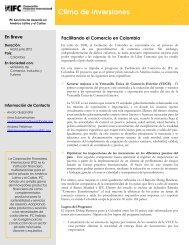
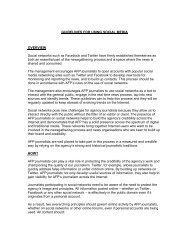
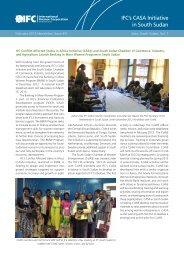

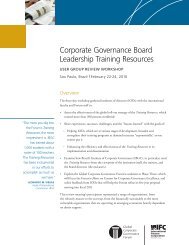




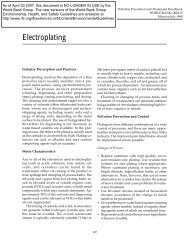

![Print a two-page fact sheet on this project [PDF] - IFC](https://img.yumpu.com/43449799/1/190x245/print-a-two-page-fact-sheet-on-this-project-pdf-ifc.jpg?quality=85)


